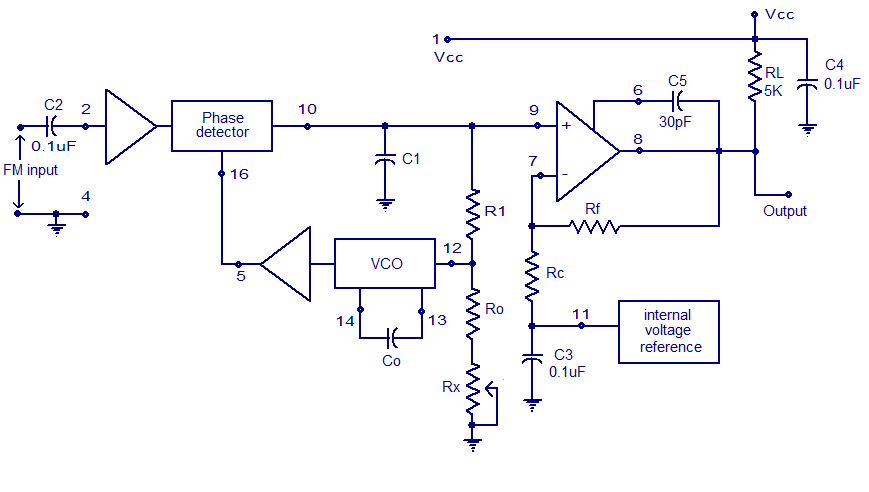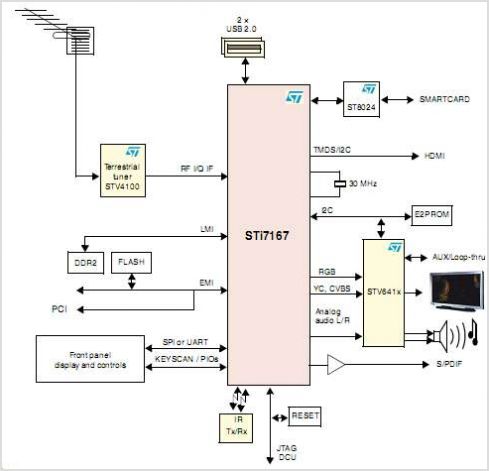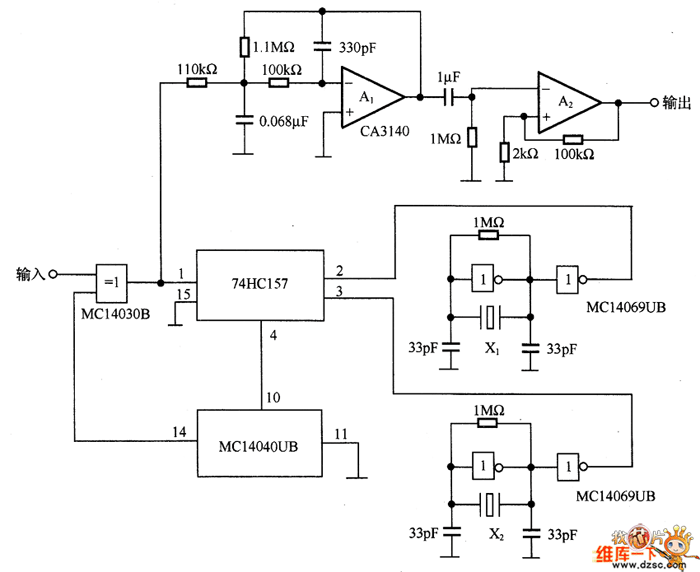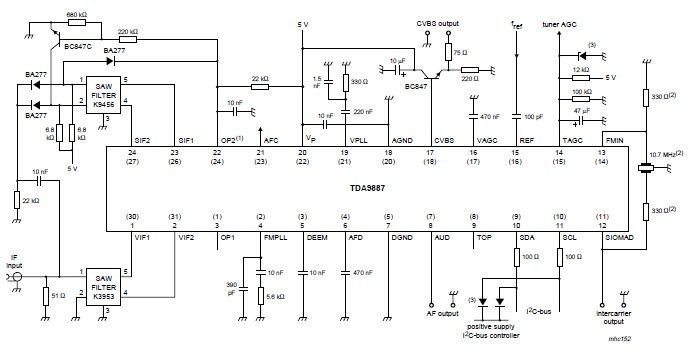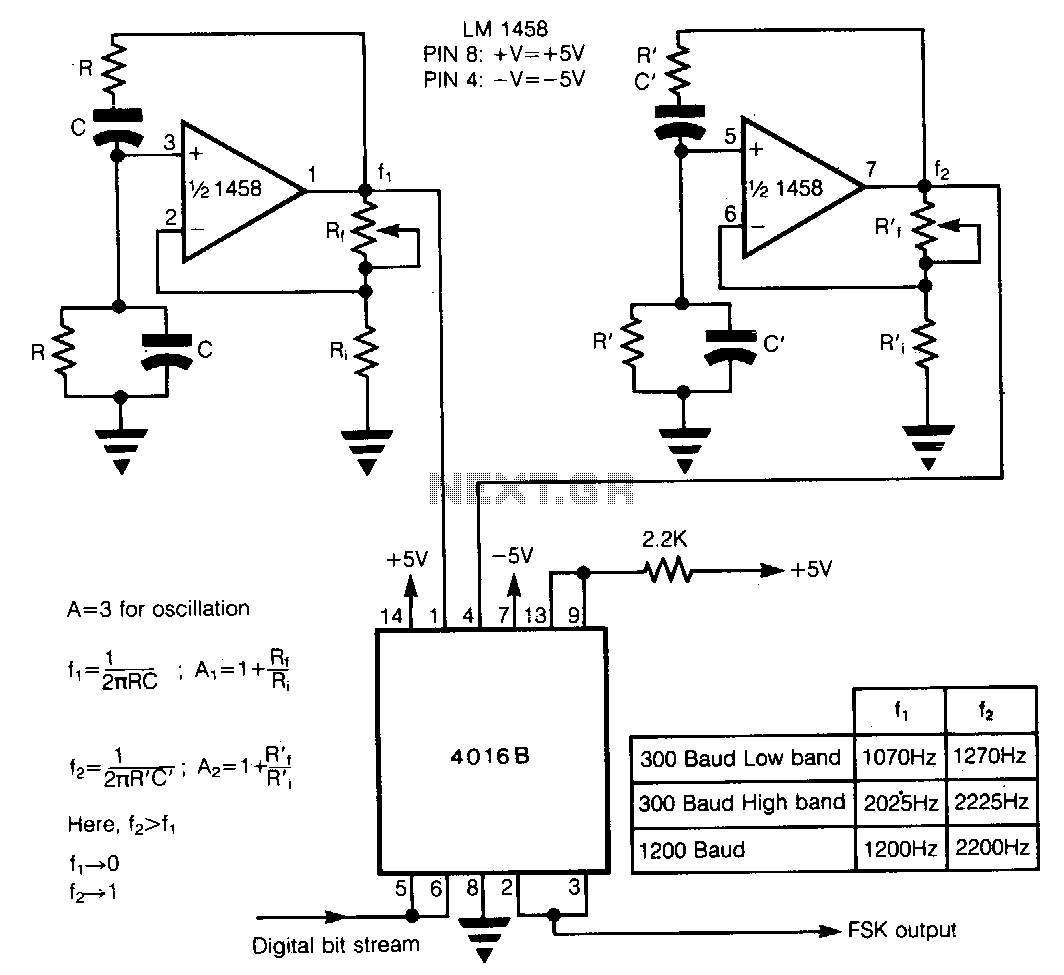
FSK Demodulator
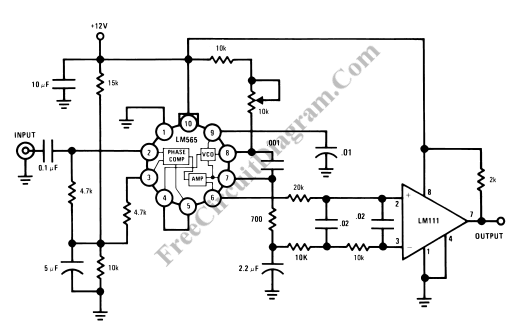
This FSK demodulator converts the FSK signal into a serial digital signal. FSK modulation is employed to transmit digital serial data, and demodulation is necessary to retrieve this data.
The FSK (Frequency Shift Keying) demodulator is a crucial component in digital communication systems, particularly for applications involving the transmission of digital serial data. The primary function of the FSK demodulator is to convert the frequency-modulated signals back into their original digital form, allowing for the accurate retrieval of transmitted information.
An FSK demodulator typically operates by detecting the frequency shifts in the incoming signal. It identifies two distinct frequencies that represent binary data: one frequency for a binary '1' and another for a binary '0'. The demodulation process involves filtering the received signal to eliminate noise, followed by the detection of the frequency changes.
The circuit may include components such as a bandpass filter to isolate the frequencies of interest, a phase-locked loop (PLL) for frequency detection, and a comparator to convert the detected frequencies into a digital output. The output is usually a serial stream of bits that can be processed by a microcontroller or other digital logic devices.
In terms of implementation, the FSK demodulator can be designed using discrete components or integrated circuits (ICs) specifically tailored for demodulation tasks. The choice of components will depend on factors such as the required data rate, signal quality, and the specific application environment.
Overall, the FSK demodulator is essential for ensuring reliable communication in systems that utilize FSK modulation, enabling the seamless transition from analog signals back to their original digital format for further processing and analysis.This FSK demodulator convert the FSK signal to serial digital signal. FSK modulation is used to transmit digital serial data, and we need to demodulate it to. 🔗 External reference
The FSK (Frequency Shift Keying) demodulator is a crucial component in digital communication systems, particularly for applications involving the transmission of digital serial data. The primary function of the FSK demodulator is to convert the frequency-modulated signals back into their original digital form, allowing for the accurate retrieval of transmitted information.
An FSK demodulator typically operates by detecting the frequency shifts in the incoming signal. It identifies two distinct frequencies that represent binary data: one frequency for a binary '1' and another for a binary '0'. The demodulation process involves filtering the received signal to eliminate noise, followed by the detection of the frequency changes.
The circuit may include components such as a bandpass filter to isolate the frequencies of interest, a phase-locked loop (PLL) for frequency detection, and a comparator to convert the detected frequencies into a digital output. The output is usually a serial stream of bits that can be processed by a microcontroller or other digital logic devices.
In terms of implementation, the FSK demodulator can be designed using discrete components or integrated circuits (ICs) specifically tailored for demodulation tasks. The choice of components will depend on factors such as the required data rate, signal quality, and the specific application environment.
Overall, the FSK demodulator is essential for ensuring reliable communication in systems that utilize FSK modulation, enabling the seamless transition from analog signals back to their original digital format for further processing and analysis.This FSK demodulator convert the FSK signal to serial digital signal. FSK modulation is used to transmit digital serial data, and we need to demodulate it to. 🔗 External reference

